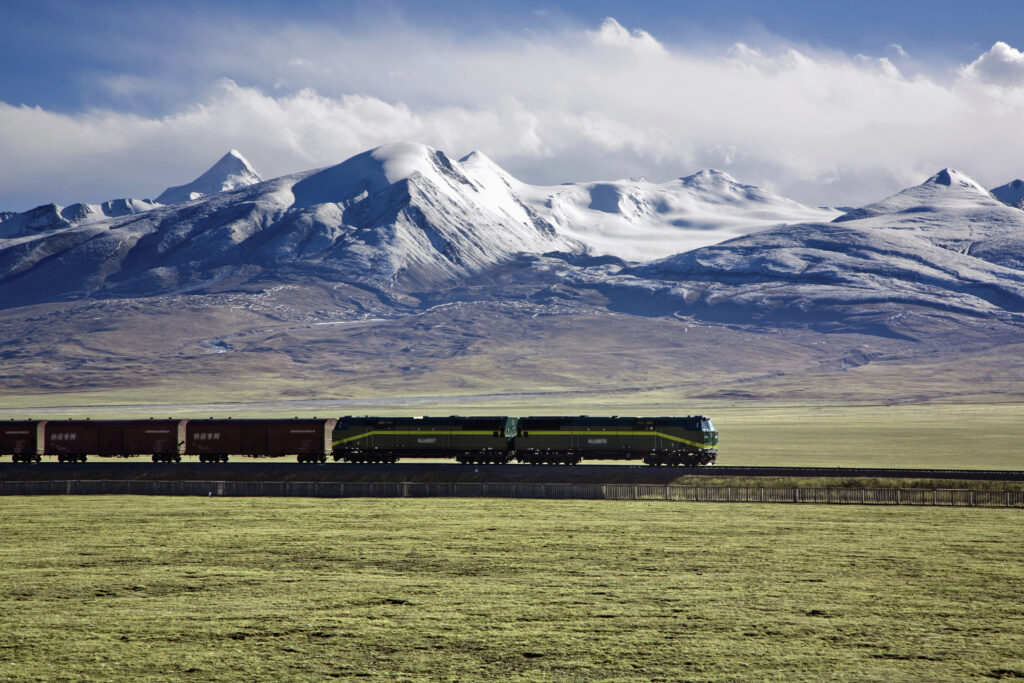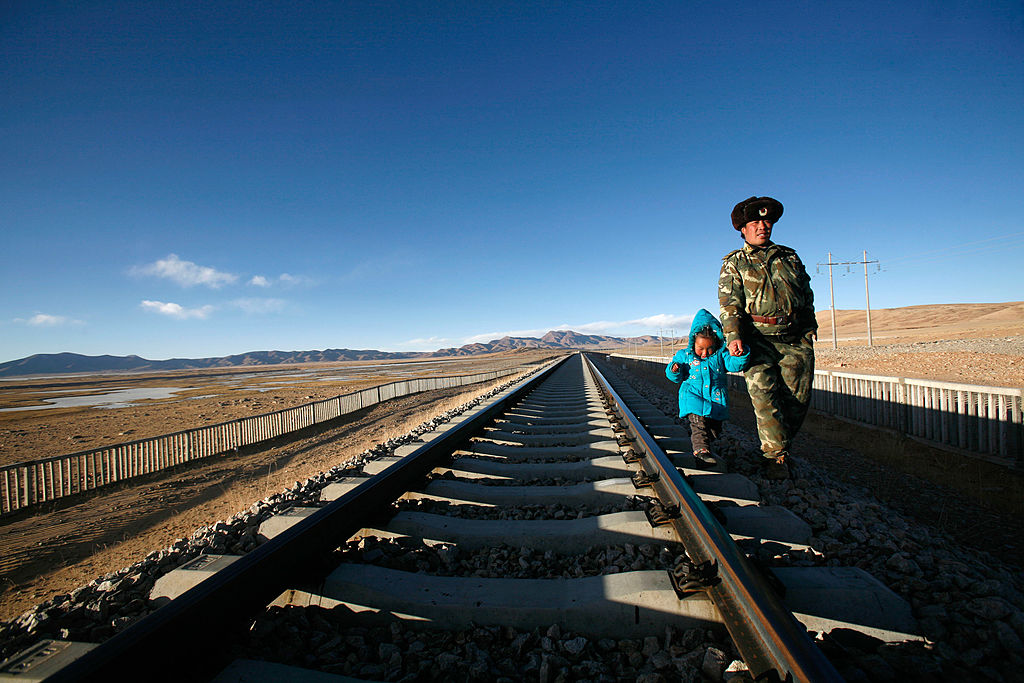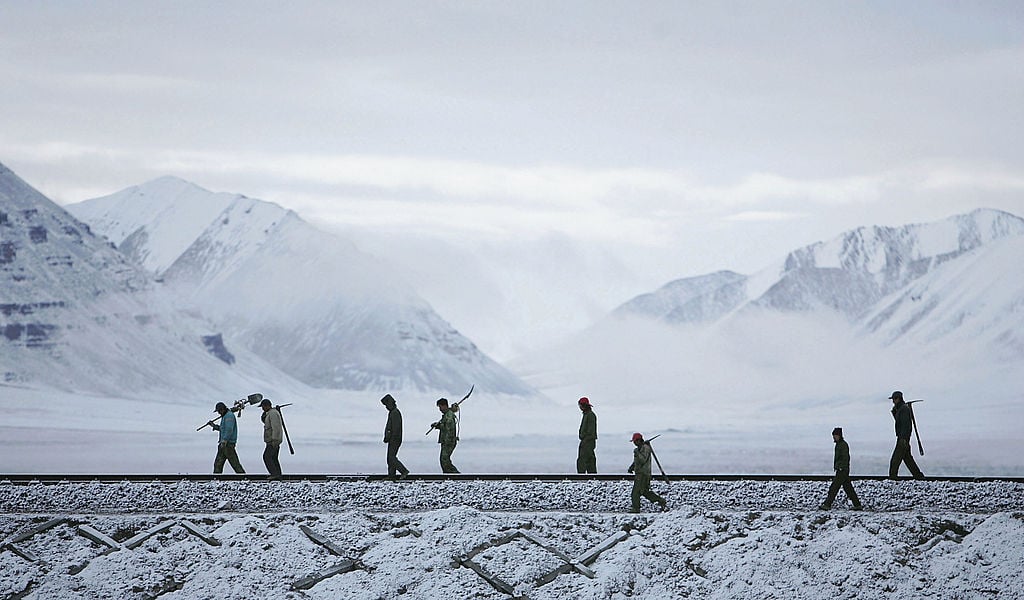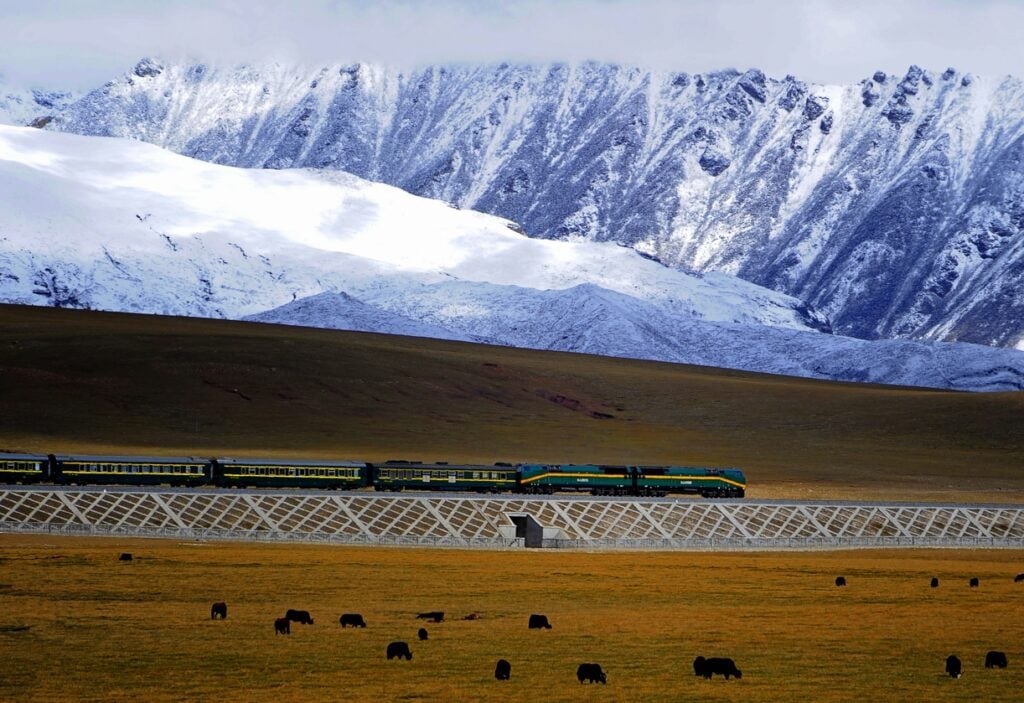The world’s highest train line is breathtaking in both its sweeping views across the Tibetan Plateau and as a marvel of human engineering. Travelling between the Chinese city of Xining in the Qinghai province, and Lhasa, in the Tibet Autonomous Region, the route traverses an area called the “roof of the world”.
With more than 600 miles of track laid at 13,000 feet above sea level, and the highest point towering over anywhere on the European continent, this is the Qinghai–Tibet railway, or the “Railway to Heaven”.

The total length of the railway now is 1,215 miles, combining two different sections as of 2006. The initial route opened in 1984 and ran 510 miles from Xining to Golmud until a vast extension from Golmud to Lhasa. It is on this latter part of the track where the highest altitudes are reached. The vast majority of the line is over 4,000 meters (13,123 feet) in altitude, a major milestone in mountaineering, and hundreds of miles were built on ‘permafrost’ – where the temperature of the land is permanently below freezing.
The section between Xining-Golmud is a double-track railway, while the rest of the way is single-track. Trains can pass each other at two-track stations or other points along the route.

It’s a passenger railway with 45 stations dotted along the journey, 38 of which are unstaffed. There’s no guarantee the train will stop at all of them, and the unmanned stations are operated from a control center in Xining. The beauty of the landscape is highlighted by “scenic platforms”, where the trains stop for a little longer, allowing passengers to disembark and take in the scenery.
Unsurprisingly, the crown of the world’s highest train line is not the only accolade achieved by the Qinghai–Tibet railway. It also has the highest tunnel in the world (the Fenghuoshan tunnel at 16,093 feet) and the highest railway station in the world (Tanggula station is at 16,627 feet). The peak altitude of the track is 16,640 feet, in the Tanggula Pass.

Some of the most picturesque locations along the journey include the Qiangtang Prairie, the Gobi Desert, the Kekexili Nature Reserve (home to the famous Tibetan antelope), the Qinghai Lake and the white Qarhan Salt Bridge.
Read More: Inside the world’s last gaslit movie theater
While it is beautiful, the route serves a very practical purpose as well: it links the historically isolated area of Tibet, home to some of the harshest weather conditions on earth, to urban China. While the Qinghai–Tibet railway is considered the highest train line, China’s railway infrastructure allows passengers to make single journeys from Tibet to major cities including Beijing and Shanghai. It will take you a while, however. A total trip from Shanghai to Lhasa will last 46 hours and 44 minutes, covering over 2,700 miles. Official ticket prices range from $55 for a ‘hard seat’, to $173 for a ‘soft sleeper’. High demand means that the price is often higher.

The Golmud–Lhasa railway cost a reported $4.7 billion and consisted of many different engineering challenges. During this latter stage, in particular, the atmosphere, oxygen, temperature and terrain made work difficult. Dozens of medical facilities were constructed along the route, and stations producing oxygen were built to help combat altitude sickness. With the train up and running, every seat is equipped with oxygen, and a doctor is on board every passenger train that makes the journey.

Even now the track is complete, the geographical challenges of the region continue to affect the project. Rising temperatures from climate change mean what was once permafrost is increasingly becoming mud. On some of the most changeable ground, the track has been elevated onto bridges.
Remarkably, it might soon get even longer. Already forging a path into one of the world’s most remote and least habitable environments, there are plans to extend the route further. While it currently ends in Luhasa, there are plans to extend down further, eventually crossing into neighboring Nepal.

Expansion is not the only potential development to the train line. Last year, International Railway Journal reported that the Chinese government had approved a new, $2.23 billion (¥14.84bn) project to electrify the entire track between Golmud and Lhasa. The ambitious project would also mean resignalling the route and replacing the switches. It is believed that three stations, at Anduo, Naqu and Dangxiong, would be upgraded. Electrification would reduce the CO2 emissions of the journey, and improve the operating costs, reliability and capacity of the route.





